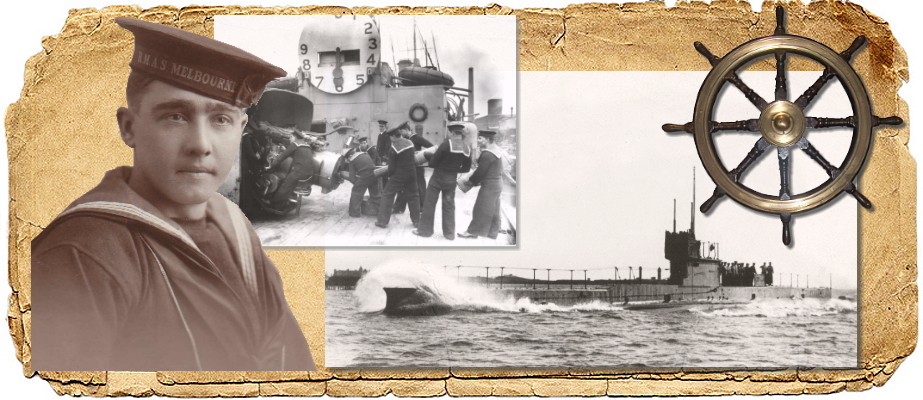|
November 1914 - Australia’s First Victory at Sea |
Major surface combatants, submarines and other naval capabilities, supported by air combat and maritime surveillance and response assets, are necessary to establish sea control... |
Dr David Stevens |
1914 |
|
Australian Sea Transport 1914 |
One of the more remarkable Australian operations during the opening months of World War I (WWI) took place neither at sea nor on the battlefield but within our national shipyards... |
Dr David Stevens |
1914 |
|
The Capture of Rabaul and the Sydney/Emden Engagement, 1914 |
This year marks the 90th anniversary of the Royal Australian Navy’s (RAN) baptism of fire both at sea and ashore during the period September-November 1914. |
John Perryman |
1914 |
|
Before Gallipoli - Australian Operations in 1914 |
On 4 August 1914 the British Empire declared war on Imperial Germany and Austro-Hungary, and Australia immediately began to contribute to the Empire’s war effort. |
Lieutenant Commander Glenn Kerr, RAN |
1914 |
|
Charts Showing HMAS Australia’s Activities - August 1914 to January 1915 |
Charts Showing HMAS Australia’s Activities from August 1914 to January 1915. These charts are from the journal of Midshipman Henry McWilliam. |
Midshipman Henry McWilliam |
1914 |
|
The Australian Naval and Military Expeditionary Force - First to Fight, 1914 |
Less than a year after the arrival of the Australian Fleet Unit in October 1913 the Royal Australian Navy (RAN) was to make a substantial and significant contribution to Imperial security in the Pacific region. The diverse events that took place during 11-14 September 1914, although now largely forgotten in the annals of Australia’s military history, formed the cornerstone on which the RAN’s enduring tradition of achievement has since been built. |
Mr John Perryman |
1914 |
|
The 1st Royal Australian Naval Bridging Train |
The most highly decorated Royal Australian Navy (RAN) unit during World War I was the little known 1st Royal Australian Naval Bridging Train (RANBT). No less then 20 awards for bravery or good service were made to this unit for service at Gallipoli and in the Sinai during 1915-17... |
John Perryman & Commander Greg Swinden, RAN |
1915 |
|
HMAS Psyche - The Forgotten Cruiser |
HMS Psyche (pronounced sigh-kee), a Pelorus third class protected cruiser named after the Greek mythological depiction of the soul, was laid down for the Royal Navy (RN)... |
Petar Djokovic |
1915 |
|
Blockading German East Africa, 1915-16 |
The wardroom of the Royal Australian Navy’s (RAN) premier training establishment, HMAS Cerberus, is home to many fine treasures reflecting Australia's naval heritage. |
John Perryman |
1915 |
|
Gallipoli as a Joint Maritime Campaign |
The 1915 Gallipoli campaign holds a unique fascination for Australians. The story of the first Anzacs and their selfless sacrifice on a distant shore has assumed mythlike status. |
Dr David Stevens |
1915 |
|
Those they left behind - RAN Memorials in the Lyness Naval Cemetery in Orkney |
Scapa Flow is a large, natural harbour protected on all sides by the landmasses of the Orkney Islands. It has been used as a base by the Royal Navy since the eighteenth century and during the First World War it was the principal base of the Grand Fleet, the largest and most powerful fleet in the world at the time. |
Commander David Hobbs, MBE, RN (Ret’d) |
1916 |
|
1918, Victory at Sea |
Much of the media and academic commentary on Australian Defence Force (ADF) capabilities displays a regrettable tendency to try and match like with like at the unit level, usually making little reference to the activities of enabling or contributing forces... |
Rear Admiral James Goldrick, AM, CSC, RAM and Dr David Stevens |
1918 |
|
Australian Sailors at Zeebrugge |
On the night of 22-23 April 1918, the Royal Navy (RN) carried out an audacious raid on the German held ports of Zeebrugge and Ostend in occupied Belgium. |
Greg Swinden and John Perryman |
1918 |



